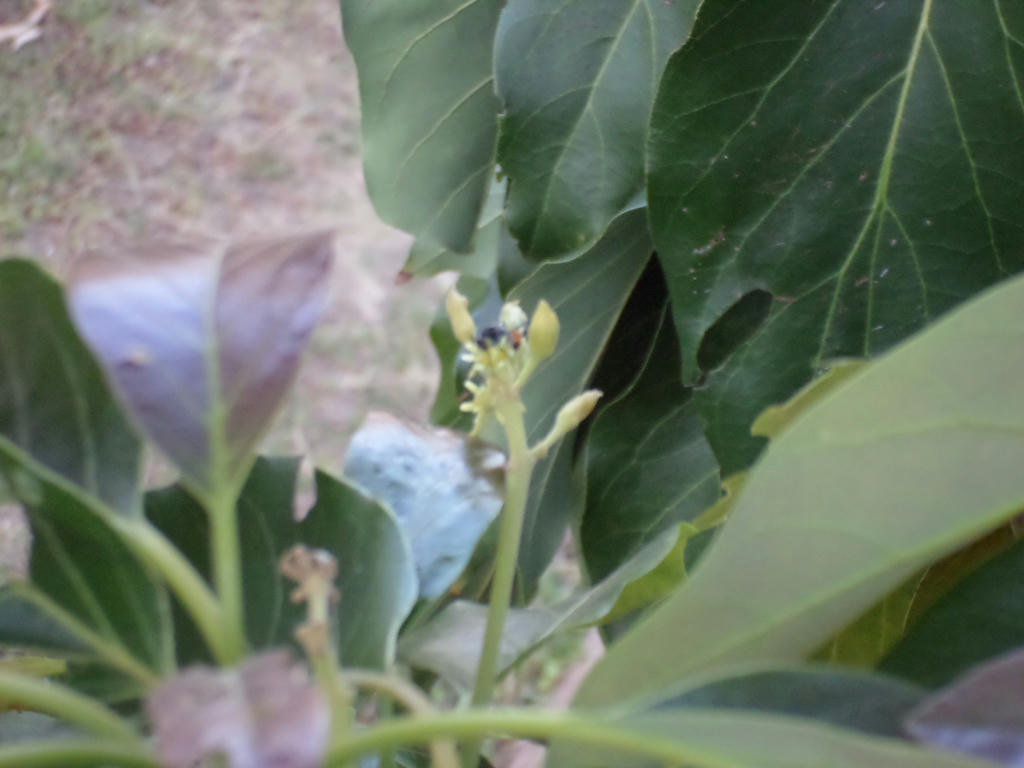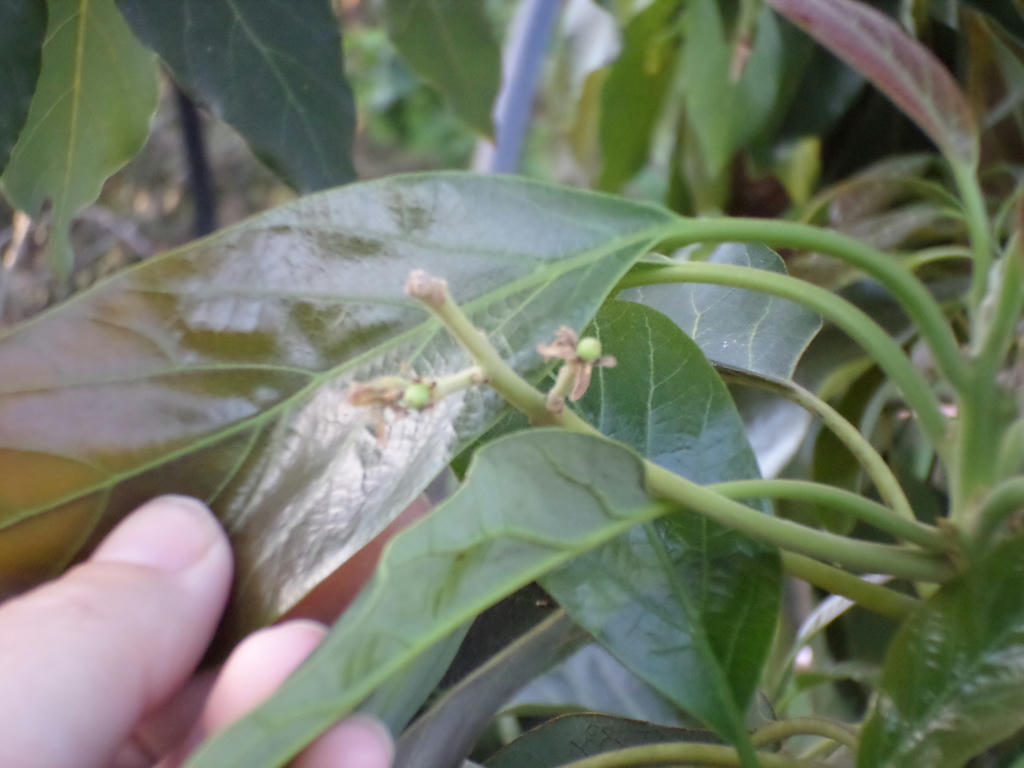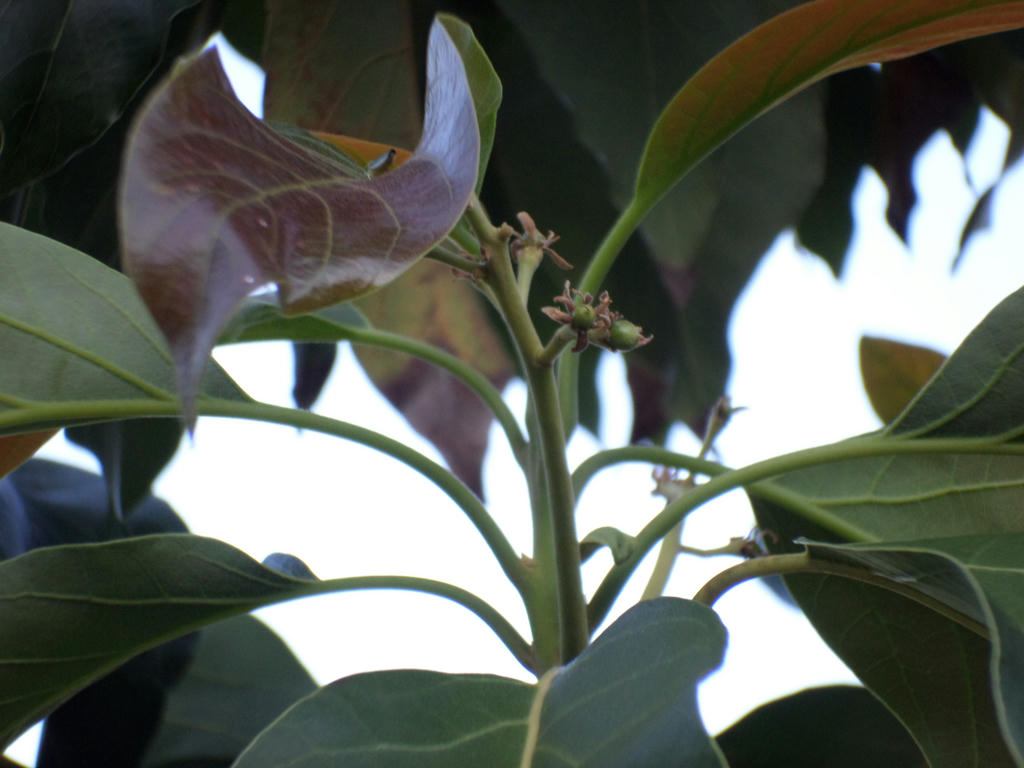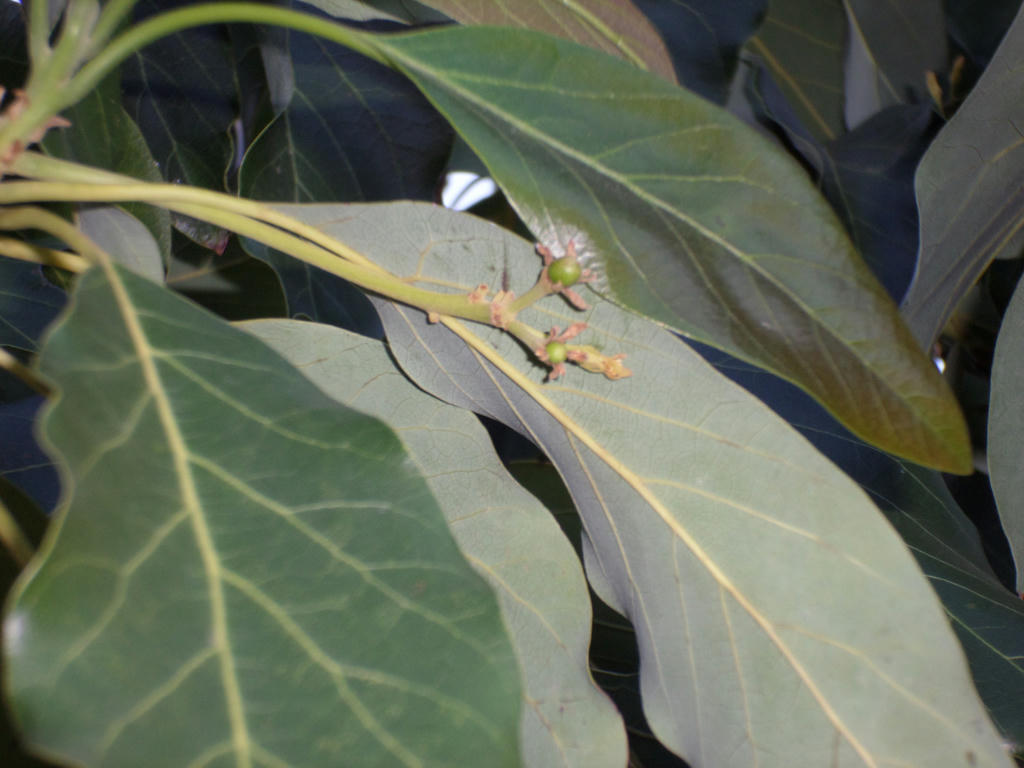Here is an excellent, short video to explain how it works:
As my tree sprouted from the compost, I have no way of knowing what variety it actually is. So when I saw the ants crawling over the flowers recently, I was hopeful I might get some fruit development. I haven't seen any bees around, so if I do get fruit, it will be thanks to the ants!
Click to enlarge - pollinating ant
The picture isn't very good, as I had to perch on the end of the retaining wall to get these - and the wind was blowing at the same time. But you can see the ant is black, and drinking from an open flower. I wasn't so sure these guys would be up to the task, but the flowers are close enough together, for a thirsty ant to visit several.
Empty stem
The first flowers I noticed lower down on the tree didn't amount to anything. You can see the flower stem (above) and the blooms which have since fallen off. There is no sign of fruit formation. It was just a promise of what could have been, but wasn't. Very disappointing.
Not all was lost however, because just the next branch over, was a slightly different story.
Two fruits?
Most of the blooms had fallen away - but are those two tiny avocado fruits I see forming? Could it be the mystery (possible type "A) avocado has managed to self-pollinate? Could I be that lucky?
Not sure if this was a normal feature of developing avocado fruit (as I have no experience with them previously) I decided to check other branches higher up the tree for consistency.
Three fruits?
I counted three green baubles this time - two, side by side and one up the top. There also seems to be one larger fruit than the other two, which could be a sign these fruits are viable, because they're growing.
I needed to check more of the tree, to be sure this was a consist pattern.
Two fruits, again
So half way down the tree, I noticed another two baubles - one being slightly larger than the other again. I'm pretty sure, I have viable fruit on the avocado tree now, if its happening all over.
I would be pleased beyond belief, if it was a Hass variety! At the time this vintage of compost was brewing, I was certain we were only eating Hass, because I wouldn't eat any other variety. I've become less of an avocado snob over the years, but I sure would be chuffed to have my own Hass tree.
Now I have to be patient and wait to see what happens next!






I wish I had room for an avocado tree! I hope you get a beautiful bounty of avocados.
ReplyDeleteHi Clarissa. Nice to meet you. Sorry for replying late, but I've been having a blogging break. :)
DeleteI would be happy to receive a few edible avocados, but I'll have to wait until winter to find out. Long wait. You can get dwarf avocado trees, and ones for colder climates. I was watching some youtube videos and apparently you can prune regular sized avocados, to whatever size you like. I'll be doing that to mine after harvesting, to keep it in line with the retaining wall
It should make it easier to feed and water with a reduced size. Apparently you can still get a lot of fruit when they're smaller too.
I might just have to try a dwarf one then, thanks!
DeleteThis is one of those posts where I can only sit back and admire with a tad bit of envy:)
ReplyDeleteSorry for the late reply too, Linda. :)
DeleteWhile I may get the subtropical fruit, you guys get the sweet and juicy berries, I could only imagine of growing in my backyard. I'm giving strawberries another chance under the avocado tree, and I'll see if I don't manage to kill my raspberry in its new location too.
Berries hate too much heat and I've got that in spades. ;)
Berries in our region grow pretty freely in the shaded woods so that might help you. The ones that we cultivate are the reds and they are their own forest. The wild berries are the black ones that are very seedy. Maybe there is a hybrid that you can find that is good for your area. Strawberries are grown out in open hot and dry fields. We grow ours in a south facing bed but the evening sun is behind the apple tree and its canopy gives them dappled light after 4 pm. That might help you?
DeleteYes, thank you, all good advice. :)
DeleteI'm coming to the conclusion, we are lacking other plants to moderate the extremes - or enough of them, as in the case of the red berries. I have a raspberry plant, which survived in a thicket for years, but then I had to dig a swale where it was, so it had to come out. All the canes I propagated died.
Lesson learned: mass plant a plant, don't space it out so its always hungry for food and moisture.
What an interesting video. I've planted avocado seeds in pots and grown small plants indoors, but I never realized how big the tree could get! Here's hoping yours is a Hass.
ReplyDeleteI thought the video was interesting too - I never knew how the pollination worked until I watched it.
ReplyDeleteAvocados can be tall trees if allowed. I remember one avocado tree we had in a rental, and it was about 20 metres (65ft approx). When they get to that size, they're pretty indestructible, and make exceptional shade trees. Though from what I've been researching on the internet, they don't mind being cut back, so long as it isn't in the hotter months, where their trunk could be exposed to heat and sunburn. They recommend a prune after harvest, which is what I'm planning with mine.